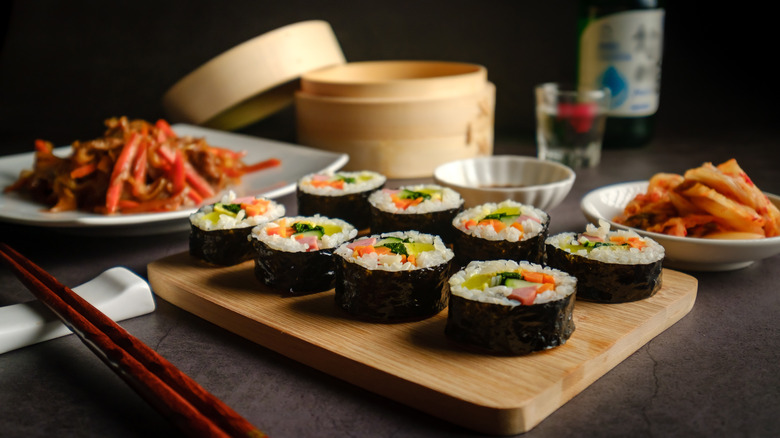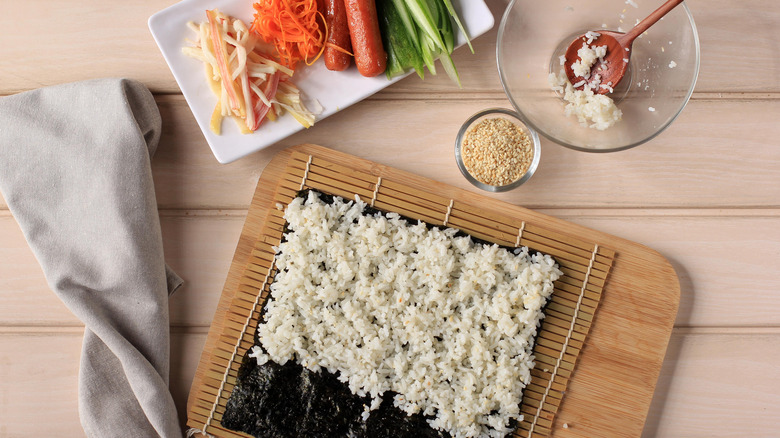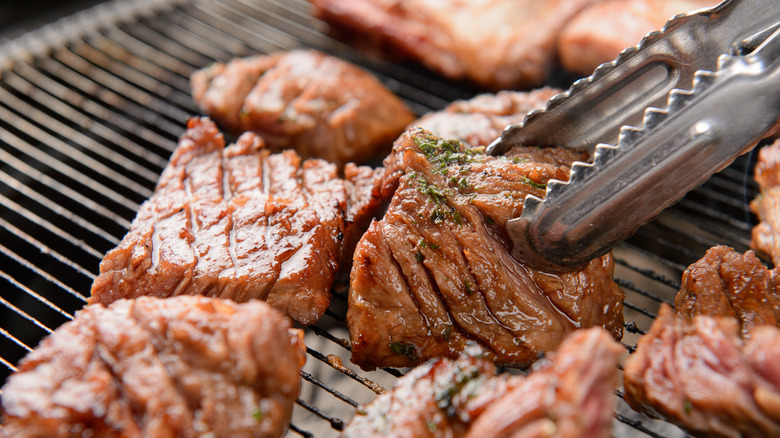Meal Prep Homemade Kimbap For Easy And Flavorful Lunches All Week
We've all been there before; bogged down by the business of the week and unable to find the time to make meals, much less ones that are exciting and bursting with flavor. That's why more than a few people in recent years have turned to the trend of meal prep — making meals on the weekend or overnight in advance. But even meal prep can feel like a slog, and we can get stuck in a rut of what we feel comfortable preparing in such a manner. But Chef Ji Hye Kim, founder of Ann Arbor, Michigan's Miss Kim, is here to tell you it doesn't have to be this way if you think outside the box and turn to simple, customizable, delicious dishes like Korean kimbap.
"The most common iteration of kimbap is similar to the frozen Trader Joe's kimbap, filled with sautéed carrots, spinach, egg omelet, pickled yellow radishes and bulgogi," Kim tells Tasting Table in an exclusive interview. "But kimbap can be filled with anything! I always have plain seaweed sheets in my pantry, which keeps really well in its dried plain form. Then I can fill it with any vegetables or [leftover] meat I have."
Kim is celebrated for her authentic, yet unfussy Korean cuisine. So, it makes sense that she would have an approachable take on meal prepping kimbap.
Chef Ji Hye Kim's kimbap approach
For those unfamiliar, kimbap — also spelled gimbap — can appear extremely similar to maki and the similarities are striking. Kimbap has a seaweed sheet exterior, rice, and fillings, much like maki. But kimbap is generally much larger in diameter with a thinner layer of rice — flavored with sesame oil, not vinegar like sushi rice — and more fillings inside. Those fillings can include raw and cooked vegetables, cooked egg, beef, pork, chicken, and beyond. That's why Kim's stance is to let your taste — and, possibly, your leftovers — be your guide.
"Use leftovers and whatever you have in the fridge," says Kim. "Pulled chicken from last night's roasted chicken works wonderfully. Bacon makes a really fun addition to kimbap. Leftover Chinese green beans from takeout can go in too. The one thing you should keep in mind is to make sure nothing is too wet or saucy, because that will make kimbap mushy and hard to roll and slice."
Chef Ji Hye Kim's tips for meal prep ease
If you want to give kimbap a try, Kim advises having some seaweed sheets on hand as well as some microwavable rice packets on hand to cut down on laborious prep. Speaking of prep, meal prep that is, Kim has a tip that can help beef up — literally — your kimbap while also making weekly meal prep a cinch.
"If you're into meal prep for the weak, make bulgogi in bulk," Kim says. "Marinate the thinly sliced meat and portion them out into smaller Ziploc bags and freeze some. In a pinch, you can defrost a bag of frozen bulgogi, sauté it and use it for kimbap."
By that measure, many different meats and vegetables can be prepared ahead and frozen or stored for use during the week. Chicken thighs can also be given the bulgogi treatment as can pork belly, tofu, and even meaty mushrooms, like king oysters or portabellas.
Kim has one final tip for authentic kimbap that has the perfect amount of piquant acid: If you have access to a Korean grocer, she says, look for bundled packs of pickled yellow radishes and soy pickled burdock. These are staples in the dish that will take your weekday kimbap to the next level.


